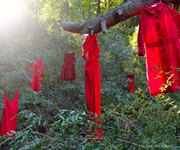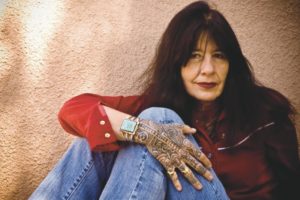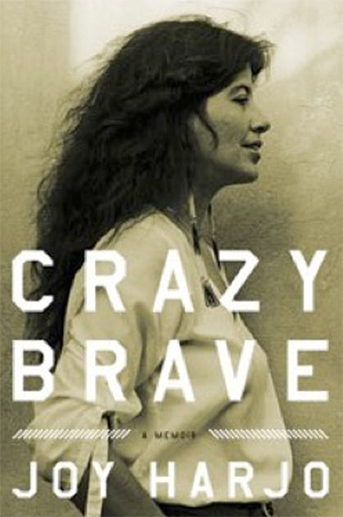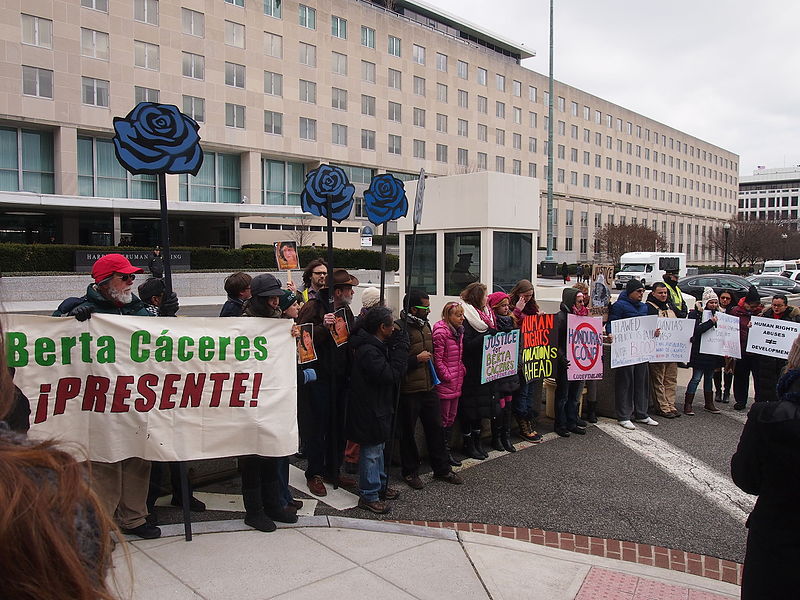When the Indigenous Women’s Alliance of South Carolina representatives rose to speak to the S.C. Women’s March, they wore red: red for the one Native woman in ten who is murdered or missing. The two women, Kathleen Hays and Terrence Lilly Little Water, spoke first in their own languages, then in English. Kathleen reminded us that “My tribe, the Caddo Nation of Oklahoma, as well as many other Indigenous peoples in North America, have a heritage distinct from our European neighbors in that women have traditionally carried the mantles of familial and societal leadership. But, as we all acknowledge by gathering here, our current environment doesn’t remember that particular tradition, a tradition rooted in this land and its varied peoples. The value of women’s involvement in public leadership has been questioned and resisted since this land was colonized and what we protest today ultimately is an attack on our worth.”

The women also brought us even more sobering news. According to the Indian Law Resource Center, “On some reservations, the murder rate for Native women is ten times the national average. Some 88% of these types of crimes are committed by non-Indians [since] 77% of the population residing on Indian lands and reservations is non-Indian.” Young Native women grow up expecting to be raped; more than half experience sexual violence.
“On some reservations, the murder rate for Native All this hit me particularly hard because I just finished reading Joy Harjo’s Crazy Brave, the story of her life until she discovered poetry and came to dazzle a global audience. She writes in “Becoming Seventy”: “it was impossible to make it through the tragedy/ without poetry.” This book is an account of the tragedy, beginning with her mother’s horrifying marriage to a violent and abusive man who controls her almost completely. While the scene could be painted in many patriarchal cultures, it carries a particular sorrow in that it so clearly shows how Native men inflict on women what has been done to them. Victims persecute victims, who then generate more victims.
 There’s nothing new about this, but seeing how it operates in an individual’s life is devastating – and seeing how Joy Harjo finds her way through it is nothing less than inspiring. Using the intuition she calls “the knowing,” she realizes that she must escape her stepfather’s house before he rapes and brutalizes her. The path to Haight Ashbury is the obvious one for an attractive Indian girl like her; in fact, someone tells her that he can hook her up with someone to help her prostitute herself on the streets. Wisely, she declines, and decides instead to try to go to an Indian school. Thanks to her talents, and with the help of a teacher who supports her, Harjo succeeds in being admitted to the Institute of American Indian Arts in Santa Fe.
There’s nothing new about this, but seeing how it operates in an individual’s life is devastating – and seeing how Joy Harjo finds her way through it is nothing less than inspiring. Using the intuition she calls “the knowing,” she realizes that she must escape her stepfather’s house before he rapes and brutalizes her. The path to Haight Ashbury is the obvious one for an attractive Indian girl like her; in fact, someone tells her that he can hook her up with someone to help her prostitute herself on the streets. Wisely, she declines, and decides instead to try to go to an Indian school. Thanks to her talents, and with the help of a teacher who supports her, Harjo succeeds in being admitted to the Institute of American Indian Arts in Santa Fe.
At last, she has a chance, and begins to blossom – but is also exposed to some destructive behavior among her peers. At times, we see her go down, and why and how it happens; while it’s heartbreaking, our hearts also have to expand to understand why the bottle is so appealing. Soon, Harjo is dealing with an unplanned pregnancy, and provides a parable of how utterly and devastatingly that can change a young woman’s life. In the ensuing years, through several relationships, the threads of alcohol and violence are entwined. I never read a more persuasive account of domestic violence in general – why men perpetrate, why women stay – and the particular horror of such violence in the Native community. (Although recall that most assaults on Native women are committed by non-Natives.) Harjo does not name her abusers, but she does talk specifically about the contradictions in their and her behavior, and what it takes for her finally to break free.
How can I honor the gift Harjo has given us, the gift of her truth, and take it into my own life and being? Only by listening when those two women in red, Kathleen Hays and Terrence Lilly Little Water, speak, and supporting their work. By repeating the names of the First People of South Carolina, the Catawba, Cherokee, Chicora, Edisto, Pee Dee and Santee. By writing here, so that non-Native people like me can support our sisters at the National Indigenous Women’s Resource Center.
 National Indigenous Women’s Resource Center Logo
National Indigenous Women’s Resource Center Logo
When public officials make offensive statements, we can circulate the truth. The Center says “Pocahontas, of the Pamunkey Tribe in Virginia (which was just recently granted Federal Recognition status in 2016, after over 400 years of colonization), was kidnapped and subsequently raped by colonizers in her early teens. She was then brought to England, where she was shown off like a specimen to the English. At the age of 21, and before she could return to her People and her homelands, she died.”
Joy Harjo’s Crazy Brave is the story of a woman who overcame. If we take her seriously, we have to find ways to stop the ongoing killing and assaulting of the women who didn’t get away. And the silencing of those who speak out on their behalf.


